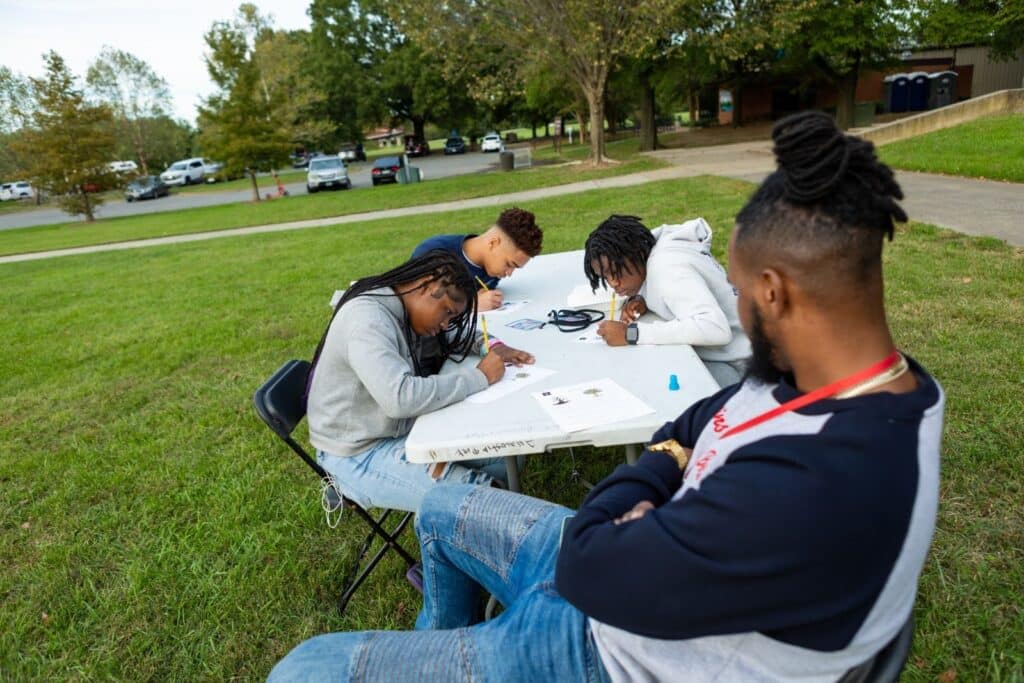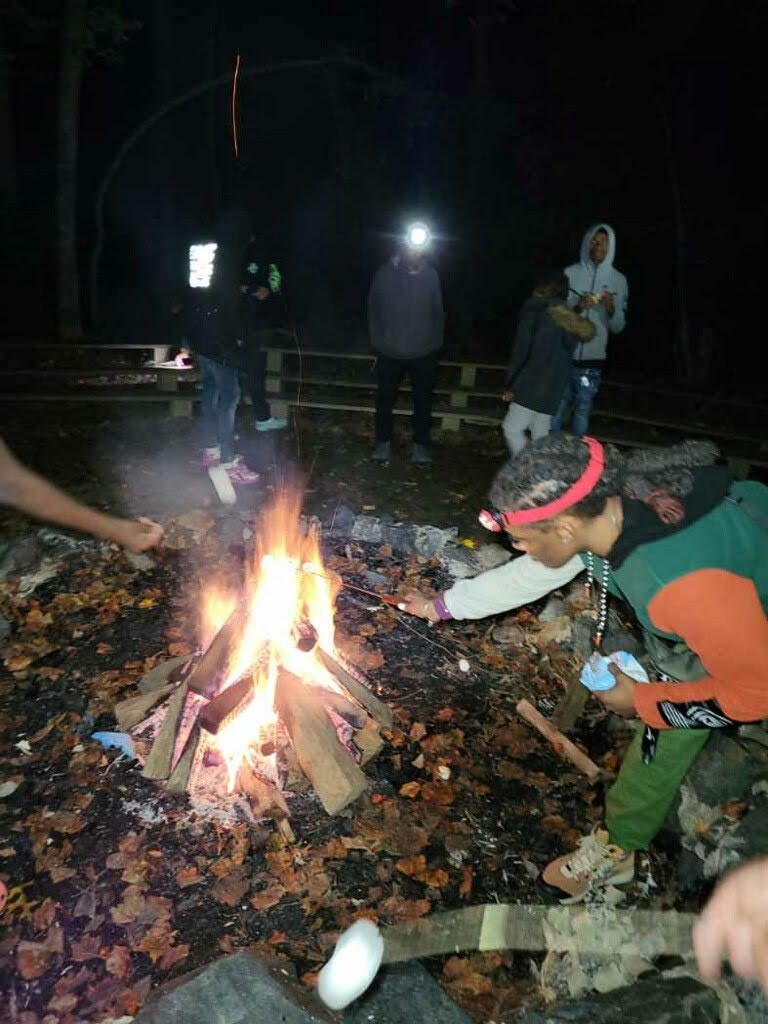
Green Space for Teens: Thrive DC’s Vision for Local Underserved Youth
By Friends of Anacostia Park
Working with the National Park Service, Friends of Anacostia Park (FoAP) turns the challenge of revitalization into an opportunity for community uplift. We connect residents with meaningful, green employment and activate Anacostia Park as a vibrant convening point for all visitors. In this blog, FoAP highlights the history of the park and Thrive DC, an after-school program providing local teens the opportunity to connect with nature and build community.
In a world where the emphasis of childhood development is placed on what happens during the school day, the importance of after-school enrichment in the adolescent experience is often neglected. In DC, the after-school lives of children and teens depend largely on household income.
In wealthier areas of the city, 91% of children engage in structured after-school activities, ranging from organized sports to theater programs, while only 56% of children from low-income households participate in these same opportunities. For high schoolers in Wards 7 & 8, where poverty rates are double the DC average, lack of access to safe recreation spaces and organized after-school programs can lead children to participate in unsafe and unhealthy activities.
Given the presence of Anacostia Park, an urban green space larger than Central Park in Manhattan, it would be easy to assume that Ward 7 & 8 children have plenty of opportunity to recreate outside of school hours. However, years of institutional neglect created a complicated relationship between the Park and local residents. Moreover, the construction of Interstate 295, beginning in the late 50s, cut off surrounding neighborhoods from the park, significantly limiting access.
In recent years, many steps have been taken by the National Park Service to increase community engagement in the Park. One of these efforts was working with local environmental leader Akiima Price and the National Park Foundation to launch Friends of Anacostia Park. FoAP became the official philanthropic partner of the National Park Service at Anacostia Park in 2021. Starting as a small team of volunteers, today Friends of Anacostia Park leads a variety of Park programming, including a green workforce development program, respite events for seniors and returning citizens, environmental education opportunities such as the Anacostia Environmental Youth Summit, and community-led park residencies.

Under this umbrella of programming falls Thrive DC, an after-school respite space for Ward 7 & 8 teens piloted last fall. This year, for six weeks in September and October, 31 teens engaged in structured activities aimed at promoting both physical and mental well-being. Coming from different schools around the area, Thrive presents an opportunity for teens to spark new, lasting connections. For two and a half hours every day, the teens are involved with activities including yoga and meditation, art therapy, emotional regulation workshops, and sports, many of these led by community partners with experience in therapy and childhood development.

More than just engaging with the park space, the teens also had the opportunity to camp overnight at Prince William Forest Park. For many of the teens, and even some of the FoAP staff leading the trip, this was their first time participating in camping, or even making a campfire.
As LaShawn, a member of FoAP’s Friends Corps and a Thrive leader, explains, “I think the best thing about the program is that it’s a safe space for [teens]. The kids can come and have a place to process their emotions. A lot of these kids can’t even go outside in their neighborhoods so coming down here means a lot to them.”
Education research shows that participation in after-school programs has a positive impact on both school attendance and educational performance. Additionally, access to green space can have similar positive impacts on child development. The American Psychological Association explains that children with greater access to nature tend to develop healthier emotional regulation habits and have a lower likelihood of developing psychiatric disorders later in life, including depression and mood disorders.
With a vision rooted in findings like these, the Thrive program emphasizes the development of lasting emotional skills and resiliency. Last year, 18 out of 21 Thrive participants reported being satisfied or very satisfied with the emotional workshops they participated in during the program: a testament to the importance of creating spaces for emotional wellness activities.
Based on their satisfaction with the program, many of the teens from the pilot year of Thrive returned this year. LaShawn says she sees how invested the kids in the program are by their eagerness to get to the Park every day, a level of commitment uncommon for people in their teenage years. “The kids come back every day. That’s how you know they’re really getting something of it because if they didn’t like it, they wouldn’t be here.”
By organizing structured after-school opportunities with an emphasis on connection to nature, Thrive is setting up Ward 7 & 8 teens with the skills to live healthier lives. With the potential for many more DC-area teens to benefit from these types of programs, Friends of Anacostia Park hopes that Thrive itself can grow while serving as a model for similar programs and organizations that use green space as a stepping stone toward a life of emotional wellness and fulfillment.


Visit Friends of Anacostia Park’s website to learn more about their work and the Thrive Program!
